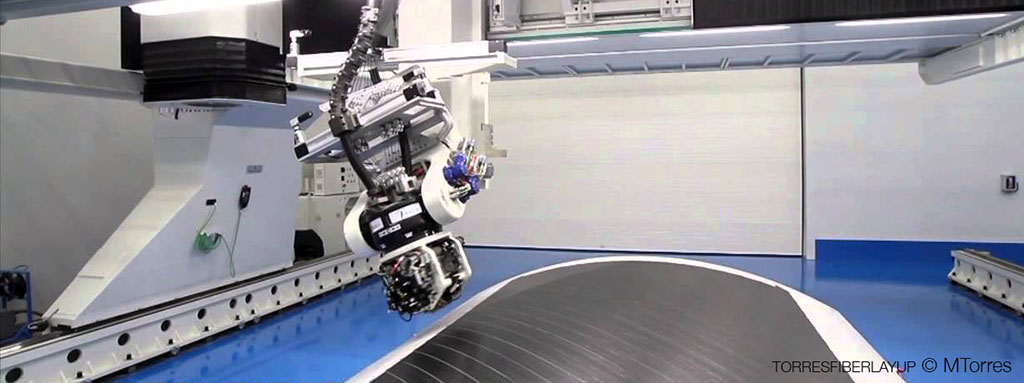The aeronautical industry began using carbon-reinforced epoxy matrix composites extensively over twenty-five years ago and seems to have found the ideal material to manufacture structural aircraft components. This material weighs only 17 kN/m3 (1700 kg/m3) – that is to say up to 37% less than aluminium (2700 kg/m3) – which, in addition, does not corrode or suffer fatigue, more than justifying its extensive use.
Composite materials have become an essential element in the aeronautical industry and their increasing use in new-generation aircraft will involve the building or transformation of new manufacturing and assembly plants.
Due to the fact that it was a material which was costly to manufacture and difficult to handle, it was employed cautiously at first. Thus, it was first used in the field of military applications, as tends to be the case in technological innovations. Despite the fact that it became “popular” and was extended to civil aviation some time ago, it should be taken into account that prepeg composite reels have to be stored at around -19° C and that they have a useful handling life of around 200 hours from the moment they are taken out of cold storage. Recent advances in the development of new manufacturing equipment and techniques have, however, greatly widened the use of these materials, allowing parts having highly complex geometrical shapes to be manufactured with productivity rates exceeding 100 kg/hour. For instance, today it is possible to manufacture the skin on the wings of the A350 measuring 35 metres by 6.8 metres, as well as practically any other part of the fuselage, wing or stabilisers of new-generation aircraft, using composites, greatly reducing their weight and the number of parts that have to be assembled. Apart from the above-mentioned Airbus A350, Boeing manufactures the 787 Dreamliner. These are currently the two large commercial aircraft manufactured with composites by more than 50%.
Simultaneously to this development, new investments in facilities are being made throughout the world which allow companies to take part in this boom in new-generation aircraft.
Seeing as these facilities have to house the most cutting-edge processes of such highly advanced sectors like the aeronautical and aerospace industries, their design has to be practically at the same level and great care has to be taken of even the tiniest detail. It is vital to have a professional with wide-ranging knowledge in charge of these kinds of projects, who can bring together the needs of manufacturing equipment suppliers and owners and design an optimal tailor-made solution in which a coordinated team of specialists and experts take part.
The large number of steps involved in the manufacturing process and the parts’ size mean that many million euros have to be allocated to industrial buildings whose surface areas are measured in hectares. Yes, effectively, several tens of thousands of square metres.
The following can be highlighted among the challenges faced by the team in charge of the manufacturing design and organisation:
- Setting out a layout having smart logistics flows among all the workstations which foresee the use of automated internal transport systems and minimises transport distances and times.
- Integrated inventory management systems equipped with real-time traceability of the raw materials, tooling and parts being processed.
- Creating enclosed spaces subject to strict temperature, humidity and particle concentration conditions (cleanrooms) that work efficiently and effectively.
- Designing totally open-plan structures having large clear spans at economically acceptable price ranges.
- Designing special foundations for equipment subject to strict deformation requirements (Automated Fibre Placement – AFP; Automated Tape Laying – ATL) and elevated loads (autoclaves).
- Very large industrial facilities especially designed with optimisation criteria for the specific industrial equipment to be supplied which reduce energy consumption through high efficiency levels.
Over the coming years, improvements are expected in aeronautical composite component manufacturing technology, such as out-of-autoclave curing procedures or the possibility of manufacturing increasingly complex components from a single part through enhancements in moulding techniques and robotisation. The conclusion that can be drawn from all this is that today the clear goal of the main civil aviation manufacturers (Boeing and Airbus) is to seek ever lighter structures for their aircraft. A key issue is therefore increasing the proportion of composites. It should also be pointed out that this aim is also shared by other aircraft and spacecraft manufacturers. We therefore have a market where there are myriad opportunities to be explored and exploited.



